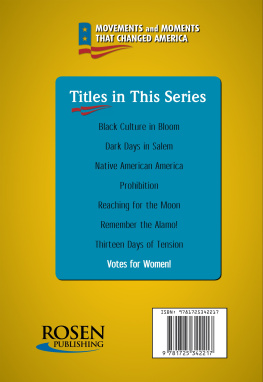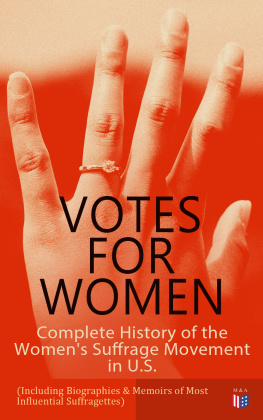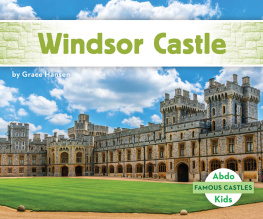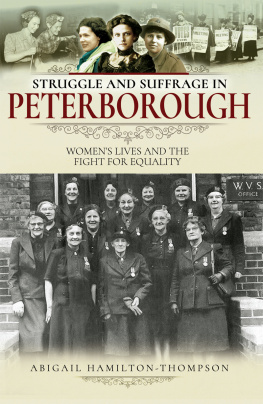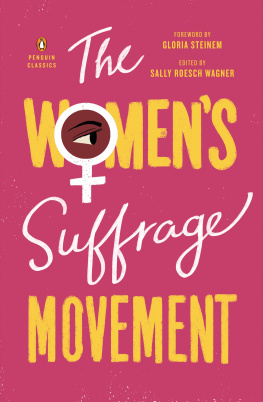First published in Great Britain in 2019 by
Pen & Sword History
An imprint of
Pen & Sword Books Limited
Yorkshire - Philadelphia
Copyright Katharine Johnson, 2019
ISBN 978 1 52671 925 6
eISBN 978 1 52671 927 0
Mobi ISBN 978 1 52671 926 3
The right of Katharine Johnson to be identified as Author of this work has been asserted by her in accordance with the Copyright, Designs and Patents Act 1988.
A CIP catalogue record for this book is available from the British Library
All rights reserved. No part of this book may be reproduced or transmitted in any form or by any means, electronic or mechanical including photocopying, recording or by any information storage and retrieval system, without permission from the Publisher in writing.
Pen & Sword Books Limited incorporates the imprints of Atlas, Archaeology, Aviation, Discovery, Family History, Fiction, History, Maritime, Military, Military Classics, Politics, Select, Transport, True Crime, Air World, Frontline Publishing, Leo Cooper, Remember When, Seaforth Publishing, The Praetorian Press, Wharncliffe Local History, Wharncliffe Transport, Wharncliffe True Crime and White Owl.
For a complete list of Pen & Sword titles please contact
PEN & SWORD BOOKS LIMITED
47 Church Street, Barnsley, South Yorkshire S70 2AS, United Kingdom
E-mail:
Website: www.pen-and-sword.co.uk
Or
PEN AND SWORD BOOKS
1950 Lawrence Rd, Havertown, PA 19083, USA
E-mail:
Website: www.penandswordbooks.com
Introduction
The first question you might ask is why Windsor? In some ways this book is about social change from the mid-nineteenth to mid-twentieth centuries and so could have been written about any British town. Well, yes except that Windsor during this period was not any town. It had the distinction of being the primary residence of the royal family and also of having some of the worst squalor and pollution in Britain, making it a unique microcosm of the country.
The struggle for womens equality didnt begin as a campaign for womens votes. It had its roots in social injustices found in so many areas of womens lives: the home, schools, health and the workplace and during two world wars. The effects of these injustices can clearly be seen in Windsor where, in the shadow of the castle, the town was riddled with poverty, violence, alcoholism and prostitution.
The birth of the womens suffrage movement went hand in hand with the demand for change. Women werent campaigning for the right to be able to mark a cross on a piece of paper they wanted the vote in order to have a voice.
Women in the nineteenth and early twentieth century had very few legal rights and in many ways were treated as second-class citizens. As visiting speaker Alice Abadam put it at a drawing room womens suffrage meeting in Frances Road in 1909, All women are lower class.
A wealthy female landowner was not allowed to vote, while her male staff were. Well-informed, well-educated women were not allowed to vote, but a male drunkard was. Without the vote, women had no say in how their lives were governed and no opportunity to help bring about changes.
A common misconception about the suffrage movement is that it was one or two organisations, whereas it was in fact a collection of different groups and societies that certainly didnt agree about everything, but shared a common cause.
In Windsor alone suffragists and anti-suffragists belonged to several different religious and political societies, including mens groups. And yet most people have never heard of them or the main characters in the towns suffrage story.
Neither did votes for women come about because of one or two events. At school I vaguely remember learning about the suffragettes chaining themselves to railings and one of them throwing herself in front of the kings horse, but of course the truth is quite different. Women werent given the vote in 1918 they won it after a very long series of battles and setbacks.
Windsors story is a little different from that of some of the more industrial towns. The Windsor suffragists were predominantly middle-class, middle-aged, educated people and were suffragists as opposed to suffragettes which is to say they belonged to the NUWSS (National Union of Womens Suffrage Societies) as opposed to the militant WSPU (Womens Social and Political Union) although suffragettes did come to Windsor.
The Windsor suffragists aim was to win the vote through peaceful means but this didnt mean they were meek. They were passionate about their beliefs and tireless in their efforts to get their message across and correct misunderstandings or false accusations from the other side.
But Windsor also had its anti-suffragists. It became known as the town in which suffragettes were most hated. Womens suffrage supporters had to put up with belittling, ridicule and rage.
But the issues surrounding womens suffrage werent all black and white, and many characters in this story dont fall conveniently into good or bad camps. Some people who had no interest in womens suffrage or were vehemently opposed to it nevertheless contributed in other ways to improve womens lives through charitable acts, fundraising or donations.
Because of the towns small physical size, ardent supporters and opposers of womens suffrage were often neighbours in the same street. During the First World War staunch suffragists and anti-suffragists found themselves working together for the war effort.
While the contribution of men towards the towns transformation is well-documented, the role women played has been much less talked about. Very little has been written specifically about women in Windsor showing how their lives interconnected.
Following the centenary anniversary in 2018 of the first votes for women, this book aims to redress the balance and explore the lives of women in Windsor above and below stairs, looking at ways in which their lives were affected by a century of enormous social and political change and ways they contributed to that change.
As Ive learned more about the Windsor suffragists in researching this book however, Ive also learned so much about the town. Windsor today is probably most often associated with picture postcard prettiness, State visits and celebrations. The castle, the pageantry, the historic buildings and lovely Thameside setting give it a coffee-table-book appeal and make it one of the most desirable and expensive towns in which to live.
Between the start of Queen Victorias reign and the reign of Queen Elizabeth that bookend this story however, Windsor was transformed from a poverty-stricken, sewage-ridden army town whose streets, according to the Windsor Express in 1836, swarmed with prostitutes and beggars, into a genteel place that people would come to visit on daytrips.
Ive lived on the doorstep of Windsor for twenty years and my children have grown up here so for me the town will always be associated with memories of watching the Changing of the Guard, feeding the ducks along the river, walking the dog in the Great Park, and going to the shops and cafes.


